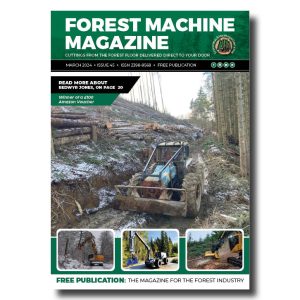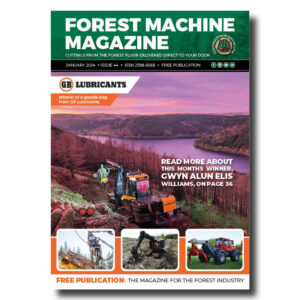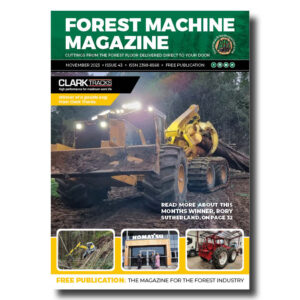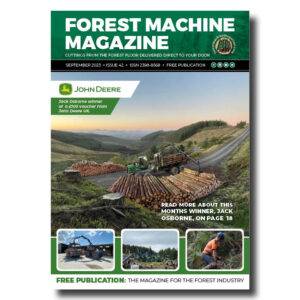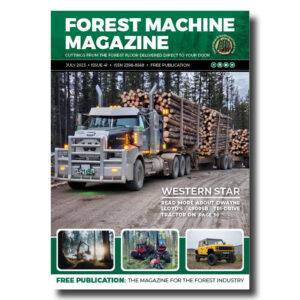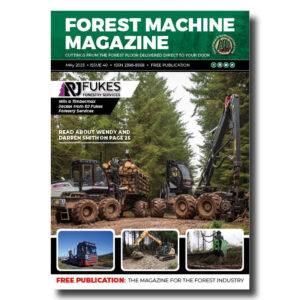Fast Markets reports that soaring wood prices, tariff uncertainty, and currency fluctuations are squeezing margins in H1 2025 for Big Six Nordic Timber Firms
(Photo Credit: Alexandre Patchine via Alamy Stock Images)
The big six Nordic timber firms faced a tough first half of 2025, as rising raw material costs, tariff uncertainty, a slow building market, and fluctuating currencies squeezed profits, according to a Fast Markets report. It coincides with wood prices reaching record highs, benefiting vertically integrated firms and those that have recently expanded capacity, while others struggle to manage costs.

-
That’s a remarkable amount of work hours for a single machine, the Norcar 600 owned by Erkki Rinne is taken well care of, it even has the original Diesel engine.
-
Kieran Anders is a forestry contractor working in the lake district. His work involves hand cutting and extracting timber using a skidder and tractor-trailer forwarder.
-
It is not possible to eliminate chain shot, but there are simple steps that can be taken to reduce the risk.
-
Arwel takes great pride in the fact that the mill has no waste whatsoever, “the peelings are used for children’s playgrounds, gardens and for farm animals in barns in the winter and the sawdust has multiple uses in gardens and farms as well.
-
Timber hauliers need to encourage young blood in, and also look after the hauliers we have, we need make the sector a safe and positive place to work.
FIND US ON
Finland’s Koskisen Corporation emerged as the standout performer, topping the Fast Markets rankings with revenue up 24.3% to €176.0 million and adjusted EBITDA rising 33.2% to €19.8 million. Its sawn-timber division contributed significantly to this growth, with sales leaping 47.2% to €96.2 million and EBITDA increasing to €9.6 million from €2.2 million a year earlier. “The positive development of the sawn-timber segment continued,” said CEO Jukka Pahta, even as he warned that “current raw-material prices are not sustainable from the point of view of the industry’s profitability.” In Sweden, SCA relied on its self-sufficient supply chain—controlling timber supplies, energy generation and logistics—to boost net sales by 7% to SEK 10.5 billion (€932 million) and sustain a 34.9% EBITDA margin.
The company’s wood segment alone saw sales rise 24% to SEK 3.2 billion and EBITDA jump 35% to SEK 546 million, with shipment volumes up 19% at 1.09 million cubic metres. Whilst fellow heavyweight Stora Enso also weathered the storm, lifting first-half sales by 5% and announcing plans to divest 175,000 hectares—12.4% of its Swedish forest estate—for €900 million. “We focused on areas within our control—enhancing sourcing, operational efficiency, commercial excellence, working capital and fixed costs,” said CEO Hans Sohlström.
In May, Stora Enso announced it would divest 12. 4% of its Swedish forest holdings—around 125, 000 hectares—in a deal valued at € 900 million (approximately US $ 1. 02 billion). (Photo Credit: Stora Enso Stock Image)
Meanwhile, Södra reported a significant turnaround in Q 2, swinging to an operating loss of SEK 389 million from a SEK 398 million profit the previous year. Net sales decreased by 4% to SEK 7. 2 billion, affected by SEK 580 million in adverse currency fluctuations and SEK 240 million in maintenance- shutdown costs. President and CEO Lotta Lyrå described “a triple external effect” prompting a broad action plan to regain competitiveness. Similarly, UPM’ s revenue for the first half declined 3% to € 5. 05 billion, with EBIT dropping 20% to €413 million. CEO Massimo Reynaudo attributed this decline to “tariff announcements that caused uncertainty in global trade, which weakened demand and the U. S. dollar,” especially impacting pulp and communication- paper operations.
Meanwhile, Metsä Group increased H 1 sales by 4. 4.5%, reaching € 3. 07 billion, but saw operating profit decline to €44 million from €57 million, as President and CEO Jussi Vanhanen cited “higher wood- raw- material costs” and implemented a €300 million cost- savings programme.
European Commission President Ursula von der Leyen criticised the Trump tariffs, claiming they are “bad for business and even worse for consumers.” (Photo Credit: Dati Bendo. This file is shared under the Creative Commons Attribution 4. 4.0 International license)
The timber industry leaders have attributed poor performance in pulp and paper to the uncertainty surrounding tariffs. In April, European Commission President Ursula von der Leyen condemned the Trump
tariffs, stating they are “bad for business and even worse for consumers.”
The timber industry leaders have attributed poor performance in pulp and paper to the uncertainty surrounding tariffs. In April, European Commission President Ursula von der Leyen condemned the Trump tariffs, stating they are “bad for business and even worse for consumers.”
Despite these challenges, most sawn- timber sectors experienced modest volume increases, led by Koskisen’ s 41. 4% jump to 197, 197,200 cubic metres —highlighting the industry’ s resilience. Looking ahead, Nordic timber companies are preparing for a sluggish recovery in European construction and ongoing trade- policy turbulence. Firms with diversified portfolios, integrated operations, and recent capital investments appear best placed to navigate the remainder of 2025.f 2025.
Sign up for our free monthly newsletter here
Contact forestmachinemagazine@mail.com to get your products and services seen on the world’s largest professional forestry online news network.
#homeoflogging #writtenbyloggersforloggers #loggingallovertheworld
Written by loggers for loggers and dedicated solely to the equipment used in forestry operations.



